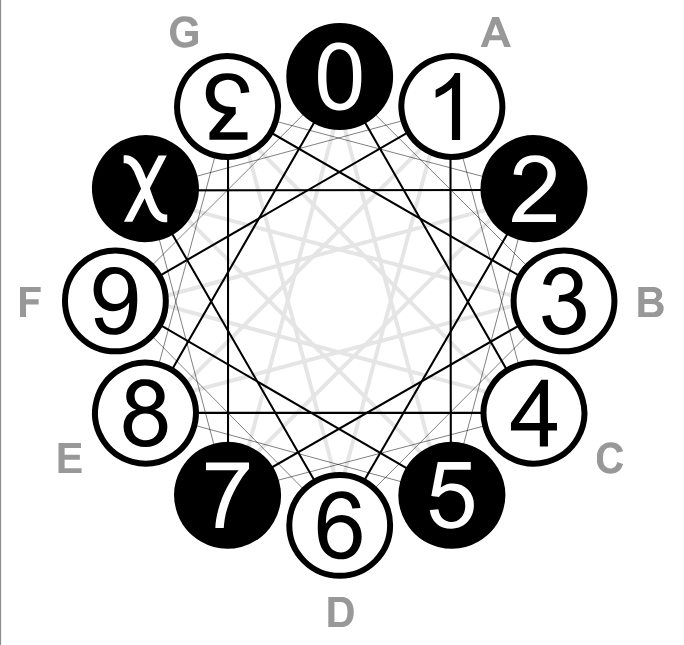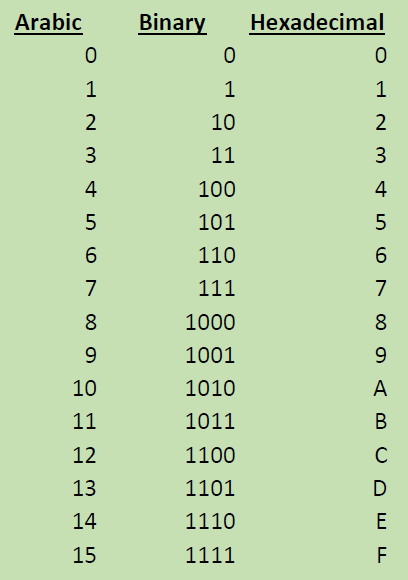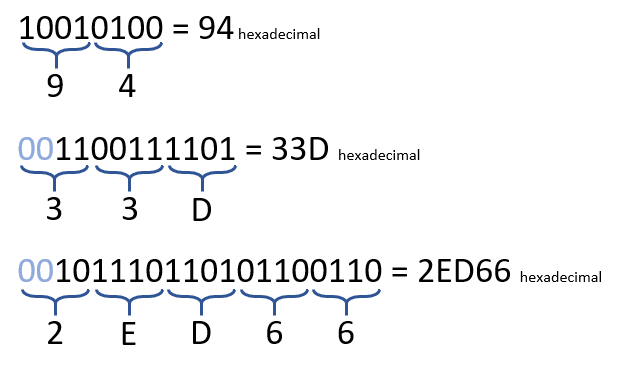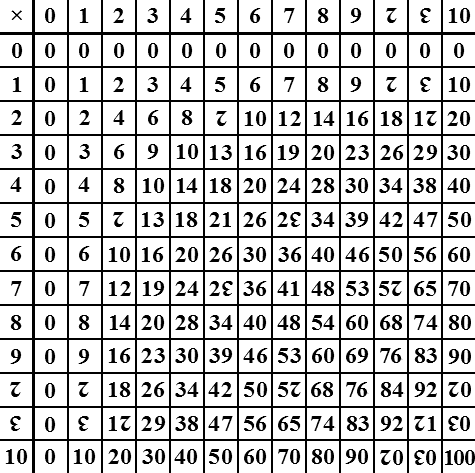Dozenels
by Andy Boyd
Today, a call to action. The University of Houston presents this series about the machines that make our civilization run, and the people whose ingenuity created them.
When he died in 1978, F. Emerson Andrews was praised as the country's leading "foundation watcher," a man who knew as much as anyone about how individual charities raised and spent their money. But Andrews also liked to write. And in one magazine article he gave birth to a cult. The article's topic? The number twelve.
"[The] Arabic numerals [we use today]," wrote Andrews, "embody a serious error, from which we have suffered ever since." That error, according to Andrews, was that it used just ten digits, 0 through 9. Andrews wanted to add two new digits for ten and eleven, dec and elf, for a system with twelve digits.

Duodecimal digits (Symbola font) Photo Credit: Wikimedia
We naturally equate a number with its representation in Arabic numerals. When I say one-hundred, you likely visualize the digit 1 followed by two 0s. But in fact, that's just the name we write down to represent the concept of one-hundred things - oranges, bricks, whatever. If we started with twelve digits instead of ten then the name we'd write for a collection of one-hundred things would be 8 followed by 4.
Andrews' article found a home in the 1934 issue of the Atlantic Monthly, a publication not known for tackling math. Andrews discussed the history of number systems and made his case for twelve. Each inch on a ruler would have its own unique character. The same would be true of clock faces. Andrews also made the case that the decimal representations of important fractions would be simplified.

Keys in dozenal clock Photo Credit: Wikimedia
With bold statements like "the system of 10 is a survival from barbaric finger-counting, unsuited to a civilized science of mathematics," readers heeded Andrews' call to action. Societies were formed. Meetings were held. Bulletins were published. And they still are. The Dozenal Societies in both the U.S. and U.K. remain advocates of twelve digits.
Could it happen? We need only look at the efforts to introduce the metric system in the U.S. to find an answer. People didn't start thinking in kilometers. They kept converting back to miles. It'd be vastly worse with a new number system. And the advantages to twelve digits are minimal. On top of it all, something new has entered the equation since Andrews' article first appeared: computers.
Computers use binary numbers - numbers constructed from only two digits, 0 and 1. Binary numbers are too long and cumbersome for humans, so when we look at the numbers inside computers we convert them to numbers with - brace yourself - sixteen digits. Why? Because conversion from two to sixteen digits is easy; conversion from two to ten is relatively hard. Today, if we designed a number system from scratch, we might start with sixteen digits. But not to worry. Until computers take over and start demanding we talk their language, we'll be living with our safe, familiar, ten digits.
I'm Andy Boyd at the University of Houston, where we're interested in the way inventive minds work.
(Theme music)
The two additional characters, which Andrews referred to as dec and elf, have taken various shapes and names throughout history. See duodecimal symbols for more information.
The conversion between numbers with two digits (binary numbers) and sixteen digits (hexadecimal numbers) is easy by virtue of the fact that 2 and 16 are powers of 2, which allows numbers to be converted by inspection making use of the following table. Observe that the symbols A B C D E F are used to fill out the list of required symbols in the hexadecimal number system.

The First Sixteen Numbers in Three Different Number Systems
As examples, the binary numbers 10010100, 1100111101 and 101110110101100110 are converted to hexadecimal as follows.

Examples of Converting Binary to Hexadecimal Numbers
More information on the conversion process can be found here.
In reality, sixteen digits would be unruly as the foundation for a human number system since it would more than double the number of entries children learn when memorizing their times tables. Since 8 is also a power of 2, an eight-digit system (octal numbers) would reduce the size of our present times tables while also providing an easy means for conversion to and from binary. Hexadecimal is more commonly used, however, since it fits more neatly with the groupings of binary digits computers work with.

Dozenal multiplication table Photo Credit: Wikimedia
For a related episode, see TIMES TABLES
"F. E. Andrews Dies; Foundation Expert." New York Times, August 9, 1978. See also: https://www.nytimes.com/1978/08/09/archives/fe-andrews-dies-foundation-expert-author-of-30-books-was-head-of-a.html. Accessed April 24, 2018.
F. Emerson Andrews. "An Excursion in Numbers." Atlantic Monthly, October 1934. See also: http://www.dozenal.org/drupal/sites_bck/default/files/DSA_andrews_excursion_numbers.pdf. Accessed April 24, 2018.
Gene Zirkel. A History of the Dozenal Society of America. From the Dozenal Society of America website: http://www.dozenal.org/drupal/sites_bck/default/files/db49209_0.pdf. Accessed April 24, 2018.